Electromagnetic Induction and Alternating Current 2 Question 9
10. A metal
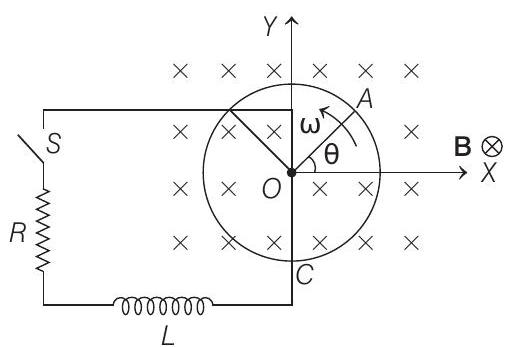 without friction along a fixed conducting circular ring in the same plane as that of rotation. A uniform and constant magnetic induction
without friction along a fixed conducting circular ring in the same plane as that of rotation. A uniform and constant magnetic induction
(a) What is the induced emf across the terminals of the switch?
(b) The switch
(i) Obtain an expression for the current as a function of time.
(ii) In the steady state, obtain the time dependence of the torque required to maintain the constant angular speed. Given that the
Show Answer
Answer:
Correct Answer: 10. (a)
(b) (i)
Solution:
- (a) Consider a small element of length
Speed of this element,
Therefore, induced emf developed across this element in uniform magnetic field
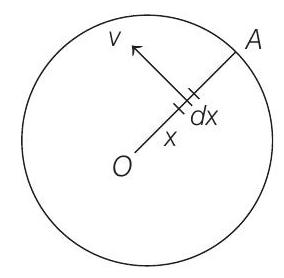
Hence, total induced emf across
(b) (i) A constant emf or PD,
The equivalent circuit can be drawn as shown in the figure.
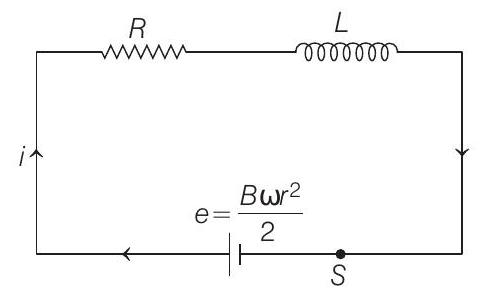
Switch
The
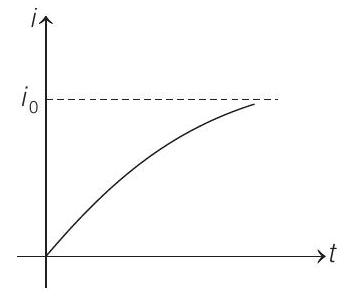
(ii) At constant angular speed, net torque
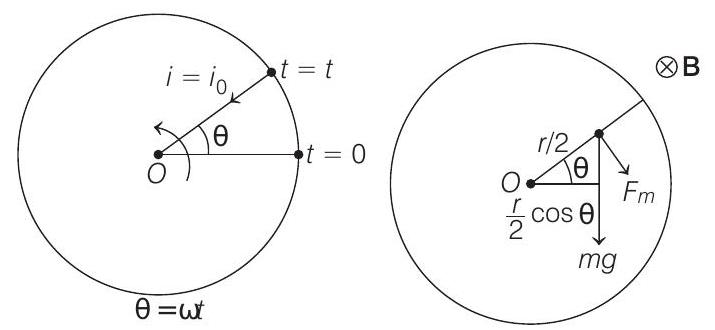
The steady state current will be
From right hand rule, we can see that this current would be inwards (from circumference to centre) and corresponding magnetic force
Torque of this force about centre
(clockwise)
Similarly, torque of weight
Therefore, net torque at any time
(clockwise)
Hence, the external torque applied to maintain a constant angular speed is
Note that for






